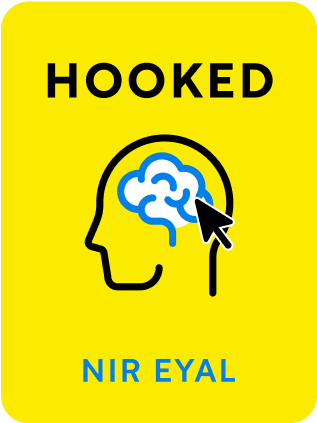

This article is an excerpt from the Shortform summary of "Hooked" by Nir Eyal and Ryan Hoover. Shortform has the world's best summaries of books you should be reading.
Like this article? Sign up for a free trial here .
What do you do once you have a product? Do you know how to build a customer base?
Knowing how to build a customer base is an essential skill for getting a business off the ground. Loyal customers will keep your business going and bring in new customers.
Read more about how to build a customer base.
How to Build a Customer Base With Investments
The more effort we put into something, the more we value it, and the more likely we are to return. Thus, to encourage a user to return and build a habit, prompt them to put something of value into the system so that they value the app more highly and pave the way for longer-term rewards.
Here are examples of the types of user investments, with explanations of how they improve future rewards and enable triggers:
1. Content Curation
The idea for how to build a customer base: when users curate content they like, the product can surface more content the user is likely to enjoy through customization.
- In iTunes and Spotify, users add songs to their collection. The services learn the users’ preferences and surface more music they’ll like. Introduction of new music provides triggers for users to return.
- In Facebook, people’s digital lives are largely catalogued in the timeline – photos, videos, status updates, articles shared, friends’ content liked. Facebook learns the user’s preferences and surfaces content that encourages more engagement. New social content is a compelling trigger to return.
2. Data
The idea: when users contribute personal data, the product can issue useful recommendations by analyzing the data.
- In LinkedIn, users offer their own personal employment data as a virtual resume. Adding more details increases the likelihood they can gain contacts or job opportunities. Connection requests and profile views are triggers to return, engage, and further improve their profile.
- In Mint, users contribute financial data to supervise cashflow in one place. Adding more financial accounts allows Mint to provide more helpful recommendations and enables features like budget setting. Useful triggers arise when budgets are broken, suspicious transactions are detected, or ways to save money appear.
3. Followers and Social Connections
The idea for how to build a customer base: when a user connects to other users, the contributions of other users provide more value and are compelling triggers to return.
- In Twitter, people follow other accounts to personalize content (see “content curation” above) but also collect followers if they are active tweeters. Having more followers makes every tweet more impactful as a content creator. Triggers arise when you post content that followers reply to and retweet.
- In Tinder and any dating app, users express preferences for each other. More usage allows the app to deliver people you’re more likely to have romantic success with. Triggers arise when people you’re interested in also express interest in you or send messages.
- In Snapchat, texting, and messaging in general, the barrier to responding is very low. Adding a friend in one messaging app makes it more valuable for both people (Metcalfe’s Law). Triggers arise when you receive messages from people you care about.
4. Reputation
The idea: when users build reputations on a site, their influence increases, and their desire to leave decreases.
- In eBay, Yelp, and Airbnb, building a strong reputation as a vendor increases your customer flow. Maintaining a 5-star rating takes serious work, which makes highly-reviewed services all the rarer and more valuable. Triggers arise when threats to reputation like bad reviews appear.
- In Reddit, Quora, Stackoverflow, and forums, users accumulate points and status for being of value to the community. Higher reputations make your contributions seem more valuable, and thus contribute further to your reputation.
5. Skills
The idea: For highly technical software like Photoshop and Salesforce, using the product requires great time and effort. Investing more time unlocks new capabilities that produce better results, in the form of better looking images or more sales closed.
Triggers are less natural here, but may arise through product updates or as result of the output (eg changes in sales lead status).
6. Reminders
The idea for how to build a customer base: explicitly asking the user to set reminders for herself is a form of investment and rewards.
- In Any.do, users make to-do lists. The app asks the user to connect to their calendar, which provides a trigger: right after the next meeting ends, Any.do prompts the user to record any follow-up tasks.
—
In every one of the strategies above, notice how the switching costs are incredibly high after investing a lot of effort. Thus each service has a natural defensible moat from competitor attack and that’s how to build a customer base.
Furthermore, note how all of the above tend to have virtuous cycles or flywheel effects – because the product gets more valuable with more investment, the user wants to return and use it more, which further increases the product value.
Caveat: because investment increases friction, ask users to do work after they’ve received the variable rewards, not before. And to prevent scaring users away, stage the investment into small chunks of work, starting with small, easy tasks and building up complexity over successive cycles.

———End of Preview———
Like what you just read? Read the rest of the world's best summary of Nir Eyal and Ryan Hoover's "Hooked" at Shortform .
Here's what you'll find in our full Hooked summary :
- The 4 key steps that addictive tech products use to ensnare you
- Why user rewards need to be random and variable to have the strongest effect
- How to build irresistible apps yoruself






